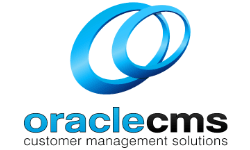How Workforce Planning Drives a Better Customer Experience
When most people think of customer experience, particularly as it relates to contact centres, their first thoughts are about how the consultant interacts with the customer and how well they meet the customer’s needs.
And that’s certainly a large part of it.
It’s in the name, after all, customer experience.
But so much more goes into having the right consultant in the right place at the right time.
And, when you ask ChatGPT the question of what role workforce planning plays, you get a great list of a half dozen points containing all the corporate buzzwords you would expect, however, these points often overlook the people aspect of Workforce Planning, which is what truly drives a positive customer experience.
Drawing from my own experience in the industry—starting as a consultant before transitioning into Workforce Planning—I’ve learned that the heart of Workforce Planning is about supporting and enabling the people on the frontlines.
When I was a consultant, I had no idea what the Workforce Planning team did beyond telling me when my shifts were.
But once I joined the team, I quickly realised how much goes into making sure the right people are in the right place at the right time.
That, in essence, is the role Workforce Planning plays in the customer journey: ensuring that when a customer reaches out, there is an appropriately skilled consultant ready and available to engage with them.
This process begins with forecasting—predicting how many interactions will come through via phone, email, web chat, or any other preferred channel at a given time.
From there, the team creates schedules that align with this expected volume and informs decisions on staffing needs, including recruitment and upskilling opportunities.
But this is all the dry sort of information that we try to tell people at a BBQ when someone makes the mistake of asking what it is we do for a living.
How does this fit into the overall customer journey?
Early in my Workforce Planning career, a more experienced colleague offered me a perspective that transformed my approach: in our world, the consultants are our primary customers.
It’s not just the public calling in with inquiries or the executive team making strategic decisions—it’s the consultants.
Viewing my role through this lens shifted my daily tasks in a meaningful way.
When I focused on improving every interaction with our consultants, the impact was profound.
For instance, accommodating a consultant’s request for a schedule adjustment so they could attend a family event not only prevented a potential day of sick leave (thus maintaining staffing levels) but also created a positive experience for the consultant.
A happier, more engaged employee naturally translates to better service for customers.
Scheduling is a core responsibility for any WFP team, and when you’re managing rosters for hundreds of staff members, it’s easy to forget that behind each shift are real people with real lives.
In a tightly controlled, time-sensitive environment like a contact centre, the way shifts are arranged can significantly affect the well-being of the workforce.
When Workforce Planning teams view the consultants as their customers, it encourages them to strike a balance between business needs and employee satisfaction, ensuring that consultants feel valued and supported.
This customer-centric approach extends beyond contact centres.
In my experience working in a maximum-security prison, I applied the same customer experience mindset to workforce planning.
When your job is to fill night shifts due to sick leave, you learn pretty early on not to call at 9:30 am the officer who finished work at 5 am and is trying to sleep, if your hope is to speak to someone agreeable to your request.
Similarly, calling an officer late in the day for a night shift request would mean they’d have to stay awake for over 24 hours, which isn’t fair to them or safe for the community they protect.
Viewing these officers as my customers led me to be more considerate and strategic in my approach, resulting in better outcomes for everyone involved.
Ultimately, Workforce Planning’s role in delivering an exceptional customer experience goes beyond optimised schedules and data-driven efficiency.
It’s about recognising the people our work impacts and treating them as our customers, providing a supportive and accommodating experience.
By fostering a positive environment for consultants and staff, Workforce Planning ensures that they, in turn, deliver an outstanding experience to the end customer.
In short, Workforce Planning isn’t just about managing numbers and schedules; it’s about creating an ecosystem where those numbers and schedules support the people who deliver exceptional customer service.
It’s a people-first approach that makes all the difference.
























